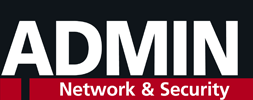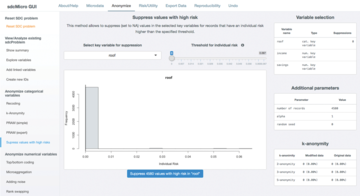« Previous 1 2 3 Next »
Anonymization and pseudonymization of data
Behind the Mask
Challenges and Risks
Implementing data anonymization and pseudonymization techniques in an organization comes with specific challenges and risks that you need to consider as an admin. These methods not only require technical expertise, but also strategic planning and an understanding of the potential pitfalls.
Complexity of implementation is one of the biggest hurdles. Especially in small and medium-sized enterprises (SMEs), which often do not have extensive IT resources, selecting and integrating suitable anonymization and pseudonymization techniques is a challenging task. You need to ensure that the selected methods integrate seamlessly with existing systems without compromising data consistency or system performance.
Another technical problem lies in achieving a balance between data protection and data quality. Anonymization techniques such as generalization and perturbation can significantly reduce the usefulness of the information. You need to consider carefully the extent to which information is modified to ensure that both data is protected and values are usable for analysis.
Integration with existing IT infrastructures can also be difficult. Many systems are not designed to process anonymized or pseudonymized data, which requires adjustments and possibly significant modifications. You also need to take care that all systems and applications involved communicate correctly with each other and have no vulnerabilities. Re-identification risks are omnipresent despite careful anonymization or pseudonymization. Attackers can try to combine anonymized data with other datasets to identify individuals. To mitigate this risk, the use of advanced techniques such as differential privacy and regular security checks make sense.
Managing keys and tokens is crucial in pseudonymization. Compromises involving this security information can lead to re-identification of the data, which makes strong encryption procedures and secure key management systems essential. Regularly checking and updating security protocols should be a matter of course. Human error also poses a risk. Employees without sufficient training could introduce vulnerabilities or use insecure practices that undermine anonymization and pseudonymization measures. This danger makes regular training and awareness programs crucial to mitigate the risk of human error.
Useful Tools
The practical implementation of anonymization and pseudonymization techniques requires the use of specialized tools and compliance with best practices (see the "Best Practices" box).
Best Practices
- Before employing anonymization and pseudonymization techniques, it makes sense to carry out thorough data classification and evaluation by identifying sensitive data and assessing the risk of re-identification. A clear-cut classification will help you to select and apply the appropriate anonymization and pseudonymization techniques.
- Use salts when hashing to ensure additional security. A salt adds random data to each record before it is hashed, minimizing the risk of rainbow table attacks. This technique significantly improves the security of hashed data and should be used by default.
- Implement continuous monitoring and evaluation processes to ensure the effectiveness of your anonymization and pseudonymization measures. Regular audits and penetration tests can help you identify and eliminate potential vulnerabilities. Continuous reviews of your data protection strategies ensure that they comply with current threats and legal requirements.
- Document all anonymization and pseudonymization processes transparently and in detail. This step not only helps with internal audits, but also when communicating with stakeholders and supervisory authorities. Clear and transparent documentation bolsters confidence in your data protection approach and makes it easier to comply with legal requirements.
- Use a combination of different anonymization and pseudonymization techniques to achieve a higher level of protection. You can increase security barriers and further reduce the risk of re-identification by applying multilayer security strategies. This approach ensures more robust protection and improves the overall security of your data processing operations.
Apache Spark [1] is a powerful open source engine for large-scale data processing. With the help of the PySpark Python interface, you can use Spark for data anonymization and pseudonymization. Spark offers extensive libraries for data manipulation and can process large amounts of data efficiently. For example, you can apply generalization and perturbation techniques to large datasets to anonymize personal data. PySpark lets you implement complex anonymization algorithms in a scalable environment.
ARX [2] is an open source tool for anonymizing data. It supports various anonymization techniques such as k -anonymity, l -diversity, and t -closeness. With the help of ARX, you can explore, analyze, and transform data to ensure compliance with data protection requirements. The tool offers a graphical user interface and an API that you can integrate into your own applications. This tool is particularly suitable for detailed anonymization projects and offers a wide range of configuration options.
sdcMicro [3] is an R package for statistical discretization and anonymization of microdata (Figure 2). It offers functions for applying k -anonymity, l -diversity, and other anonymization techniques. sdcMicro lets you anonymize data directly in R, making it useful for statistical analysis. The package can create anonymization reports and comes with anonymization quality assessment tools to ensure that the data remains both secure and analytically usable.
The format-preserving encryption (FPE) [4] technique preserves the structure of the original data. FPE is particularly suitable for the pseudonymization of data such as credit card numbers or social security numbers, because the encrypted values have the same format as the original values. Tools such as the NIST-standardized FF1 and FF3 methods provide FPE implementations that you can integrate into your applications to pseudonymize data securely.
Built-in functions
for encrypting and pseudonymizing data come with modern databases such as PostgreSQL [5], MongoDB [6], and Cassandra [7]. For example, you can use PostgreSQL extensions such as pgcrypto to encrypt data directly in the database [8]. MongoDB offers integrated encryption functions and enables the management of keys and tokens. These functions facilitate the implementation of data protection measures directly at the database level and offer high performance and security levels.
A Look into the Future
In recent years, differential privacy has established itself as a leading technique for ensuring data protection in large volumes of data. It allows data scientists to perform statistical analyses without jeopardizing the privacy of individual datasets. In the future, increasing numbers of organizations are likely to implement differential privacy, especially in areas such as the public sector, healthcare, and financial services. Understanding and applying the principles and implementation details of differential privacy is important to remain competitive in these areas.
Blockchain technology could also play a key role in the future of data anonymization and pseudonymization. By decentralizing and cryptographically securing data, blockchain offers a robust approach to data processing and storage. Anonymization techniques can be integrated directly into blockchain protocols to ensure that transactions and data records are anonymized and immutable. Closely monitoring the development of blockchain technologies and their application in the field of data protection is a good idea.
« Previous 1 2 3 Next »
Buy this article as PDF
(incl. VAT)
Buy ADMIN Magazine
Subscribe to our ADMIN Newsletters
Subscribe to our Linux Newsletters
Find Linux and Open Source Jobs
Most Popular
Support Our Work
ADMIN content is made possible with support from readers like you. Please consider contributing when you've found an article to be beneficial.






